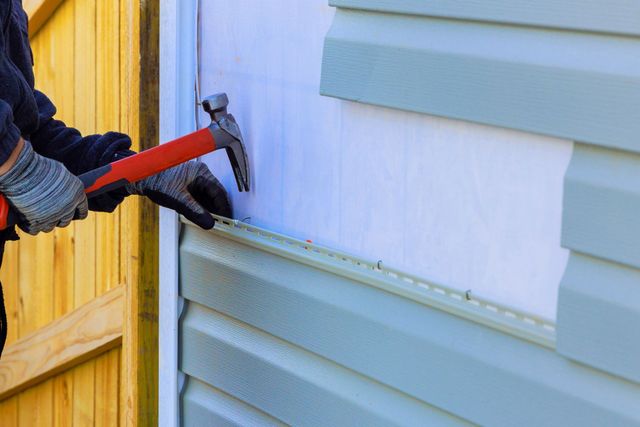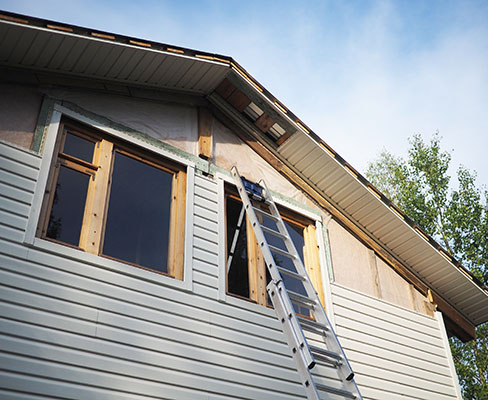Trusted Morris Siding Contractor for Durable and Affordable Home Siding
Trusted Morris Siding Contractor for Durable and Affordable Home Siding
Blog Article
The Important Overview to the Various Kinds of Exterior Siding and Their Unique Benefits
In the world of home improvement, choosing the ideal house siding is an essential choice that influences both visual appeal and useful performance. With so numerous options to take into consideration, which home siding material really stands out for your specific job?
Wood Exterior Siding
Wood siding, a preferred selection for domestic exteriors, supplies a timeless visual that integrates natural elegance with architectural stability. This home siding material is available in numerous designs, including clapboard, shingles, and board-and-batten, allowing property owners to customize their façade to match their design choices. Wood siding is typically crafted from sturdy types such as cedar, redwood, or yearn, which are recognized for their strength and ability to withstand ecological stressors.
Among the primary advantages of wood siding is its exceptional insulation properties, which can add to energy efficiency and reduced heating prices. Furthermore, wood house siding is naturally degradable, making it an environmentally pleasant alternative when sourced sustainably. Normal upkeep, consisting of paint or staining, can prolong its lifespan and boost its look, permitting home owners to protect the natural charm of the timber.
Nonetheless, possible downsides consist of vulnerability to bugs, rot, and weather damages, requiring ample therapy and upkeep - morris siding contractor. Regardless of these concerns, when effectively cared for, wood house siding can provide a sturdy and gorgeous option that boosts the character of a home while using a cozy, welcoming atmosphere

Plastic Exterior Siding
Vinyl house siding has emerged as a leading choice for house owners seeking a low-maintenance outside choice that combines resilience and price. This flexible product is crafted from polyvinyl chloride (PVC), making it immune to different weather, consisting of moisture and UV rays. Therefore, vinyl house siding does not warp, rot, or fade, ensuring resilient aesthetic charm.
One of the main advantages of vinyl siding is its substantial series of shades and styles, permitting property owners to attain the preferred appearance for their property without the demand for regular repainting. Additionally, plastic siding is very easy to install, which can dramatically lower labor costs during building and construction or renovation jobs.
Plastic siding likewise adds to power efficiency. Numerous choices attribute insulation backing, which enhances thermal efficiency, aiding to maintain comfortable indoor temperatures and possibly reducing power costs. Its smooth surface assists in very easy cleansing, requiring only regular cleaning with a yard hose pipe to get rid of dirt and particles.
Fiber Concrete Exterior Siding
Fiber concrete home siding has gained traction amongst builders and property owners alike due to its exceptional mix of sturdiness and aesthetic adaptability. Made up of a mixture of sand, concrete, and cellulose fibers, this exterior siding option is engineered to stand up to extreme climate conditions, consisting of high winds, hefty rainfall, and temperature level changes, making it a lasting choice for household outsides.
Among the main advantages of fiber cement home siding is its resistance to insects, such as termites, and its non-combustible nature, offering boosted fire security. morris siding contractor. In addition, it is offered in a vast range of shades, styles, and appearances, allowing home owners to achieve their preferred aesthetic without sacrificing performance
An additional advantage is its low upkeep requirements; fiber cement home siding generally needs paint or staining every 5-10 years, which is less regular than various other materials. Moreover, its long life contributes to a reduced total cost of possession, as it reduces the requirement for frequent repair services or substitutes.
Eventually, fiber concrete siding represents an excellent financial investment for those looking for a resilient, appealing, and these details versatile outside alternative, integrating both type and feature to enhance the home's visual appeal.
Metal Home Siding
The attraction of metal exterior siding hinges on its durable toughness and contemporary aesthetic allure, making it a favored option for modern architecture. Available in materials such as light weight aluminum and steel, steel house siding offers a variety of coatings and shades, enabling home owners to accomplish a personalized appearance that complements their style vision.

Power performance is another significant advantage, as numerous metal home siding items are made with insulation options that assist control interior temperature levels. This can bring about decreased energy costs in time. Additionally, metal exterior siding is frequently recyclable, making it an eco-friendly option for sustainability-minded property owners.
The setup process for metal siding can be relatively uncomplicated, causing a quicker turn-around time for building jobs. In general, metal house siding incorporates performance and style, making it a useful option for those looking for a long-lasting and aesthetically attractive outside surface.
Brick and Stone Exterior Siding
Brick and stone siding stands out as a timeless selection that boosts the visual appeal of any home. Known for their sturdiness and low maintenance, you can check here these materials give an outstanding return on financial investment while boosting the home's visual appeal. Available in various colors, structures, and patterns, block and stone can be tailored to suit varied architectural styles, from traditional to modern.
Among the main benefits of block and rock home siding is their energy efficiency. Both products possess natural shielding residential properties that help control indoor temperature levels, possibly lowering cooling and heating prices. Additionally, they use remarkable fire resistance contrasted to various other exterior siding options, adding to enhanced safety.
Another advantage is their longevity. Block and stone can last for decades, usually image source needing very little maintenance past periodic cleansing. Unlike timber siding, they are impervious to bugs and rot, making sure a durable outside that holds up against the components.
Conclusion
In summary, the selection of exterior siding substantially influences a home's visual allure, power effectiveness, and upkeep demands. Each type of siding-- whether timber, plastic, fiber brick, metal, or cement and stone-- offers unique advantages customized to numerous house owner choices and environmental conditions. Understanding these options makes it possible for educated choices that improve both the durability and aesthetic beauty of property exteriors. Ultimately, choosing the appropriate house siding is necessary for accomplishing a balance between capability and layout in domestic design.
One of the key benefits of timber house siding is its superb insulation buildings, which can contribute to power performance and lower heating prices. In addition, wood home siding is naturally degradable, making it an ecologically friendly option when sourced sustainably.One of the main advantages of metal house siding is its resistance to numerous ecological variables.Power efficiency is one more substantial advantage, as lots of steel siding products are created with insulation alternatives that help control interior temperature levels. Each kind of siding-- whether wood, vinyl, fiber concrete, steel, or block and rock-- offers distinct advantages customized to numerous homeowner preferences and environmental conditions.
Report this page